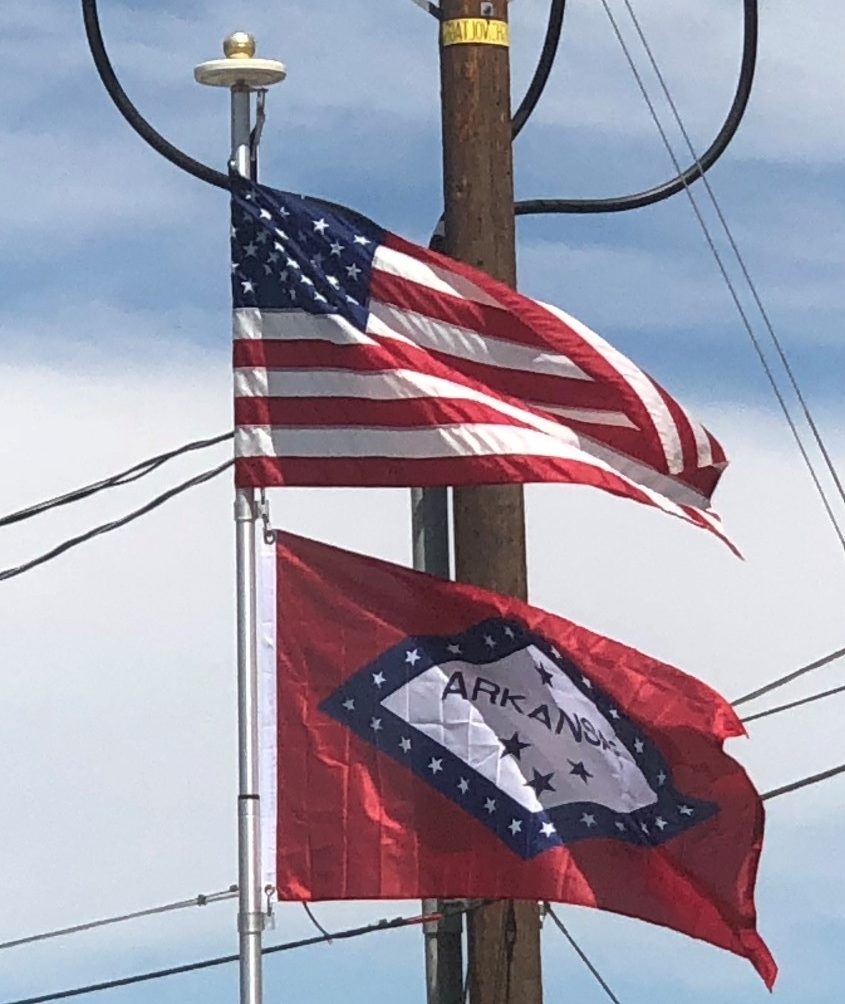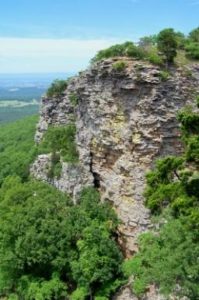
Arkansas has many rivers, lakes, and reservoirs within or along its borders. Major tributaries of the Mississippi River include the Arkansas River, the White River, and the St. Francis River.
Dominant species in Arkansas’s forests include Quercus (oak), Carya (hickory), Pinus echinata (shortleaf pine) and Pinus taeda (loblolly pine).
History:
Early Arkansas:
Before European settlement of North America, Arkansas was inhabited by indigenous peoples for thousands of years. The Caddo, Osage, and Quapaw peoples encountered European explorers. The first of these Europeans was Spanish explorer Hernando de Soto in 1541, who crossed the Mississippi and marched across central Arkansas and the Ozark Mountains. After finding nothing he considered of value and encountering native resistance the entire way, he and his men returned to the Mississippi River where de Soto fell ill. He died the following day in what is believed to be the vicinity of modern-day McArthur, Arkansas in May 1542. His body was weighted down with sand and he was consigned to a watery grave in the Mississippi River under cover of darkness by his men.
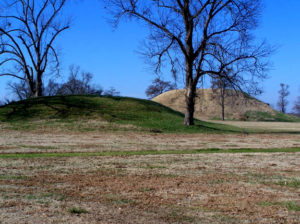
Later explorers included the French Jacques Marquette and Louis Jolliet in 1673, and Frenchmen Robert La Salle and Henri de Tonti in 1681. Tonti established Arkansas Post at a Quapaw village in 1686, making it the first European settlement in the territory.
Settlers, such as fur trappers, moved to Arkansas in the early 18th century. These people used Arkansas Post as a home base and entrepôt. During the colonial period, Arkansas changed hands between France and Spain following the Seven Years’ War, although neither showed interest in the remote settlement of Arkansas Post. In April 1783, Arkansas saw its only battle of the American Revolutionary War, a brief siege of the post by British Captain James Colbert with the assistance of the Choctaw and Chickasaw.
Purchase by the United States:
Napoleon Bonaparte sold French Louisiana to the United States in 1803, including all of Arkansas, in a transaction known today as the Louisiana Purchase.
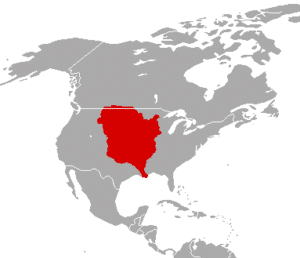
French soldiers remained as a garrison at Arkansas Post. Following the purchase, the balanced give-and-take relationship between settlers and Native Americans began to change all along the frontier, including in Arkansas. Following a controversy over allowing slavery in the territory, the Territory of Arkansas was organized on July 4, 1819. Gradual emancipation in Arkansas was struck down by one vote, the Speaker of the House Henry Clay, allowing Arkansas to organize as a slave territory.
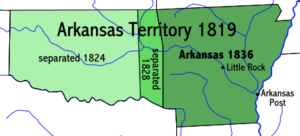
As European Americans settled throughout the East Coast and into the Midwest, in the 1830s the United States government forced the removal of many Native American tribes to Arkansas and Indian Territory west of the Mississippi River.
Additional Native American removals began in earnest during the territorial period, with final Quapaw removal complete by 1833 as they were pushed into Indian Territory. The capital was relocated from Arkansas Post to Little Rock in 1821, during the territorial period.
